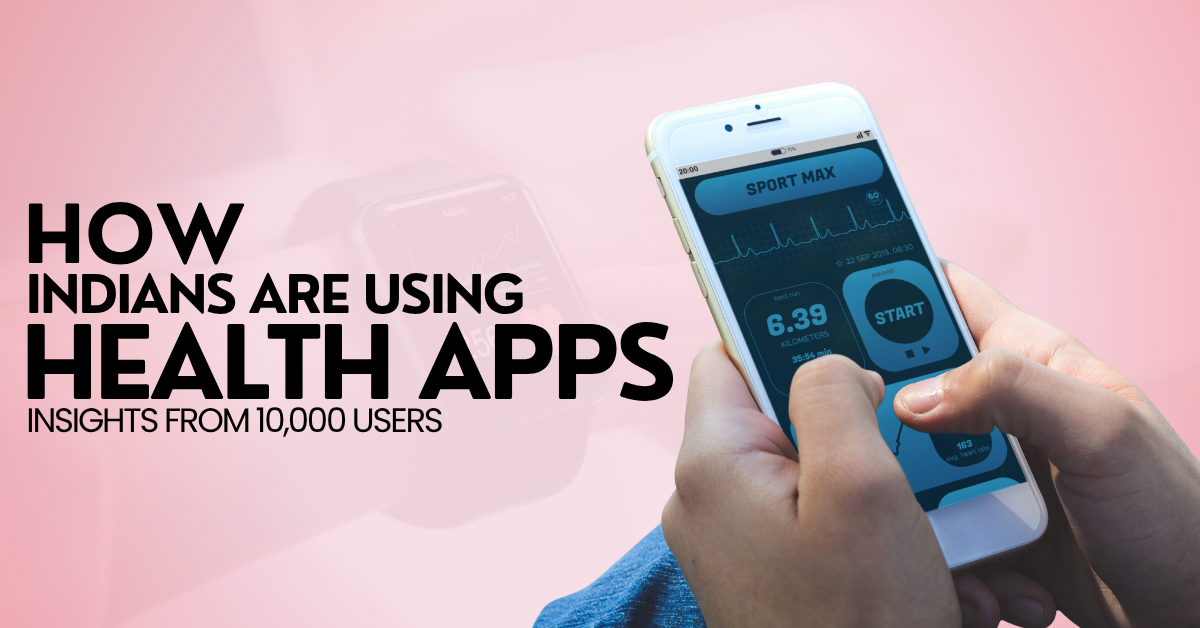India is undergoing a digital health revolution. With rising awareness around wellness and an ever-expanding smartphone user base, health apps have become the new-age companions for fitness, diet, mental well-being, and chronic condition management. But how exactly are Indians using these apps? We studied data from 10,000 users across cities and age groups to uncover real trends, behaviors, and insights.
1. Fitness Tracking Takes the Lead
Among all health categories, fitness tracking emerged as the most popular use case. Indians are increasingly relying on apps to:
Count steps
Monitor calories
Track workout routines
Measure heart rate and sleep patterns
Apps like Google Fit, Samsung Health, and Cult.Fit saw strong engagement, especially among users aged 20–35. Interestingly, even Tier 2 city users showed high adoption, particularly during and after the pandemic.
2. Mental Health is Gaining Ground
What was once taboo is now being downloaded. There’s a noticeable spike in the usage of mental wellness apps, including platforms offering:
Meditation and breathing exercises (e.g., Headspace, ThinkRight.me)
Online therapy sessions
Mood tracking tools
Young professionals and students are the largest segment here, reflecting growing stress levels and a shift toward self-awareness.
3. Diet and Nutrition Apps Are a Daily Habit
Apps like HealthifyMe, MyFitnessPal, and Yazio have become daily tools for:
Meal planning
Calorie counting
Intermittent fasting tracking
Personalized diet charts
Vegetarian and Indian-diet-focused features were especially appreciated. Users also showed interest in AI-powered nutrition coaching, especially among fitness enthusiasts and people managing weight.
4. Rise of Women’s Health Tracking
Women’s health is no longer a neglected segment. Apps like Flo, Clue, and Maya are widely used for:
Period tracking
Fertility windows
Pregnancy health tips
Women in the age group of 18–35 are the primary users, and there’s increasing demand for culturally relevant content in regional languages.
5. Health Apps as Chronic Condition Companions
Many users — especially in the 40+ age bracket — use apps to manage chronic issues like:
Diabetes (e.g., BeatO, mySugr)
Hypertension
Thyroid tracking
Medication reminders
These users value features like doctor consultation integration, health reports, and alerts for vitals — helping bridge the gap between hospitals and home care.
6. Gamification and Community are Key Drivers
What keeps users coming back? Two things: gamification and social connection.
Daily step challenges
Badges for hitting goals
Wellness communities with peer interaction
Leaderboards and rewards
These features make staying healthy feel like a fun, engaging experience — not a chore.
7. Regional Languages Drive Deeper Engagement
One of the most important insights from Tier 2 and Tier 3 cities: language matters. Apps that offered regional language options (Hindi, Tamil, Gujarati, Bengali) saw higher retention and deeper engagement.
Personalized voice guidance, vernacular content, and simple UX are proving crucial in making health tech truly inclusive in India.
8. Data Privacy is a Growing Concern
With increased use, comes increased awareness. Many users are now asking:
Where is my health data stored?
Who has access to it?
Can I opt out of data sharing?
Apps with clear privacy policies, user-controlled data sharing, and secure logins are earning more trust in this new digital health landscape.
Conclusion: India’s Health App Evolution Has Just Begun
From calorie tracking to online therapy, health apps are redefining how Indians approach wellness. The insights from 10,000 users reveal that:
Usage is multi-dimensional: fitness, diet, mental health, chronic care
Personalization, language, and UX are key to deeper adoption
Trust, community, and gamification keep users coming back
As India moves forward, health apps won’t just support fitness goals — they’ll become part of everyday healthcare routines, changing the way the nation lives, eats, moves, and heals.
Read







